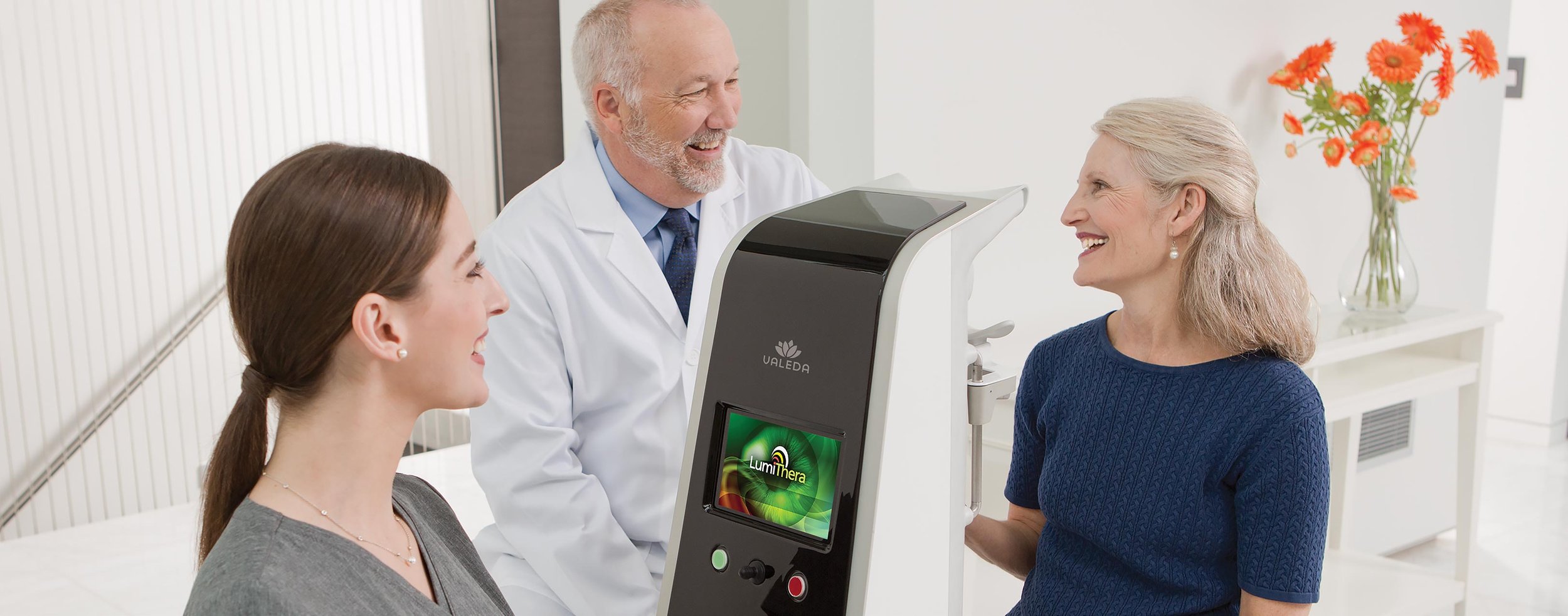How Medical Device Client LumiThera Moved to a Powerful Patient-first Strategy
Our client LumiThera Inc., a commercial-stage medical device company offering photobiomodulation (PBM) treatment for ocular damage and disease, recently announced a merger with Diopsys, Inc., a leader in modern visual electrophysiology medical devices that help eye care professionals analyze the entire visual pathway for visual and neuro-visual disorders.
The acquisition provides complementary diagnosis and monitoring to LumiThera's leading treatment platform which uses Photobiomodulation (PBM) for ocular disease and damage.
Changing the Landscape
Eyesight is one of the most important ways we interact with the world and it plays a significant role in how we learn, interact, and go about our daily activities. And as the American population ages, adapting to low vision or blindness is increasingly necessary. In fact, more than 10 million Americans suffer from macular degeneration, and most of those are over age 65. The most common of AMD is by far the dry type. The dry type can progress into the much more serious wet type if left untreated.
The tailoring of medical treatments to each patient is becoming more common thanks to advances in technology and strategic moves by those from within the medical device community. These types of targeted therapies have been proven to further reduce negative side effects and increase positive outcomes for patients across a broad scope of treatments. And when it comes to vision-threatening diseases like AMD, early detection, continuous monitoring, and a preventative approach provides new hope to patients, especially those who are most at risk for disease progression.
"Diopsys ERG testing is a powerful and quantitative diagnostic that can be coupled with LumiThera's PBM treatments to characterize early patient benefits on visual function," Joe Fontanetta, CEO, Diopsys stated in the press release. "[Diopsys] will be able to provide the tools physicians need to diagnose, treat and monitor patients and provides physicians a solution for multiple ocular diseases [that currently have] limited treatment options."
This approach differs from the more common physician practice of trial and error diagnosing: the doctor determines a likely healthcare condition related to symptoms, establishes a treatment plan based on general stats, and continues to make adjustments to that treatment until an effective plan has been established for the individual.
The Future of Ocular Therapy
LumiThera and Diopsys’s combined technologies make it easier for doctors to create a more personalized plan for each individual which will lead to better outcomes for the patients, as well as a deeper understanding of personalized, preventative medicine.
"We are strong believers of treating degenerative disease early to slow the progression of vision-threatening disease. The synergy of these technologies makes sense on many levels and could optimize Valeda treatments," stated Clark E. Tedford, Ph.D., President and CEO, LumiThera, Inc. "The key in chronic ocular disease is early diagnosis, treatment and monitoring. We believe using light-based devices, we can create a unified approach to diagnose, treat and follow patients. This may further pave the way to a more preventative approach to vision loss and a path to optimize and create a machine learning approach to individualize ocular therapy."

